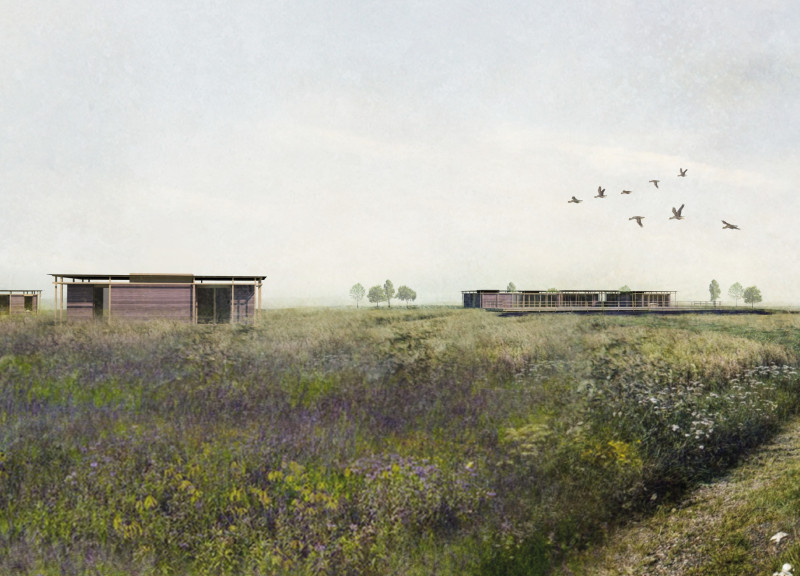5 key facts about this project
The Pavilosta Poet Huts project is located in the re-wilded landscapes of Pavilosta, Latvia. Designed to accommodate writers and poets, the project creates spaces that support solitude and reflection. Each hut serves as a unique retreat, allowing occupants to immerse themselves in the surrounding beauty. The design emphasizes a strong relationship between the built structures and the natural environment, enabling both comfort and inspiration.
Design Concept
The concept centers on integrating the huts with their environment. Each hut is carefully positioned to provide distinct views of the re-wilded landscape. This arrangement encourages users to connect with nature. Outdoor terraces increase the opportunity for users to engage with their surroundings, allowing for experiences that support contemplation and creativity.
Integration with Nature
Ecological sustainability is a key aspect of the design. The project incorporates native flora, with plants like Breckland Thyme and Narrowleaf Hawkweed introduced to create a wildflower meadow. This transformation of the site enhances the local ecosystem, contributing to biodiversity. By fostering such an environment, the project not only supports wildlife but also offers inspiration for creative work.
Cultural Context and Form
Cultural influences shape the design. The project respects traditional boundaries found in Latvian domestic architecture. These boundaries help define the individual garden spaces, creating a connection between the huts and the landscape. The design reinterprets familiar elements, such as stone boulders, integrating them into the overall layout while modernizing their purpose.
Materiality
Sustainability informs the choice of materials. Rammed earth serves as the primary construction material, which helps reduce environmental impact. This approach emphasizes low embodied energy and allows for recycling of site materials. Additionally, oak timber, a native species, adds a natural quality that aligns with the local environment. This material selection creates a visual coherence while supporting ecological goals.
The result is an environment that encourages creativity and introspection. The external terraces blend with the meadow, inviting users to step outside and engage with the landscape that surrounds them.



























